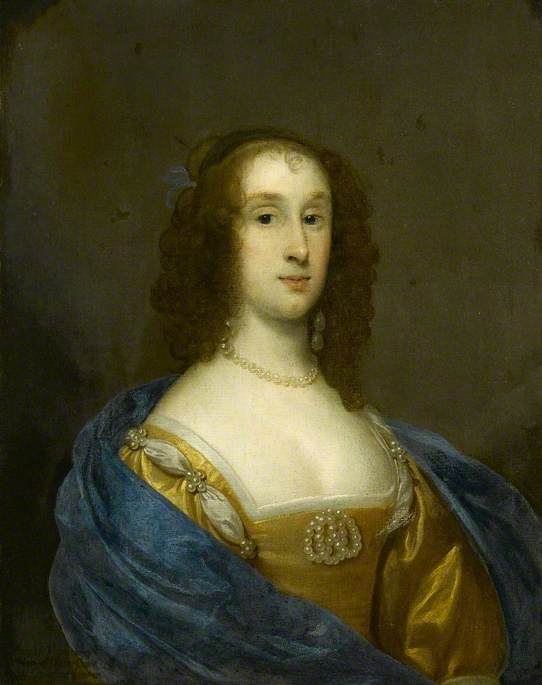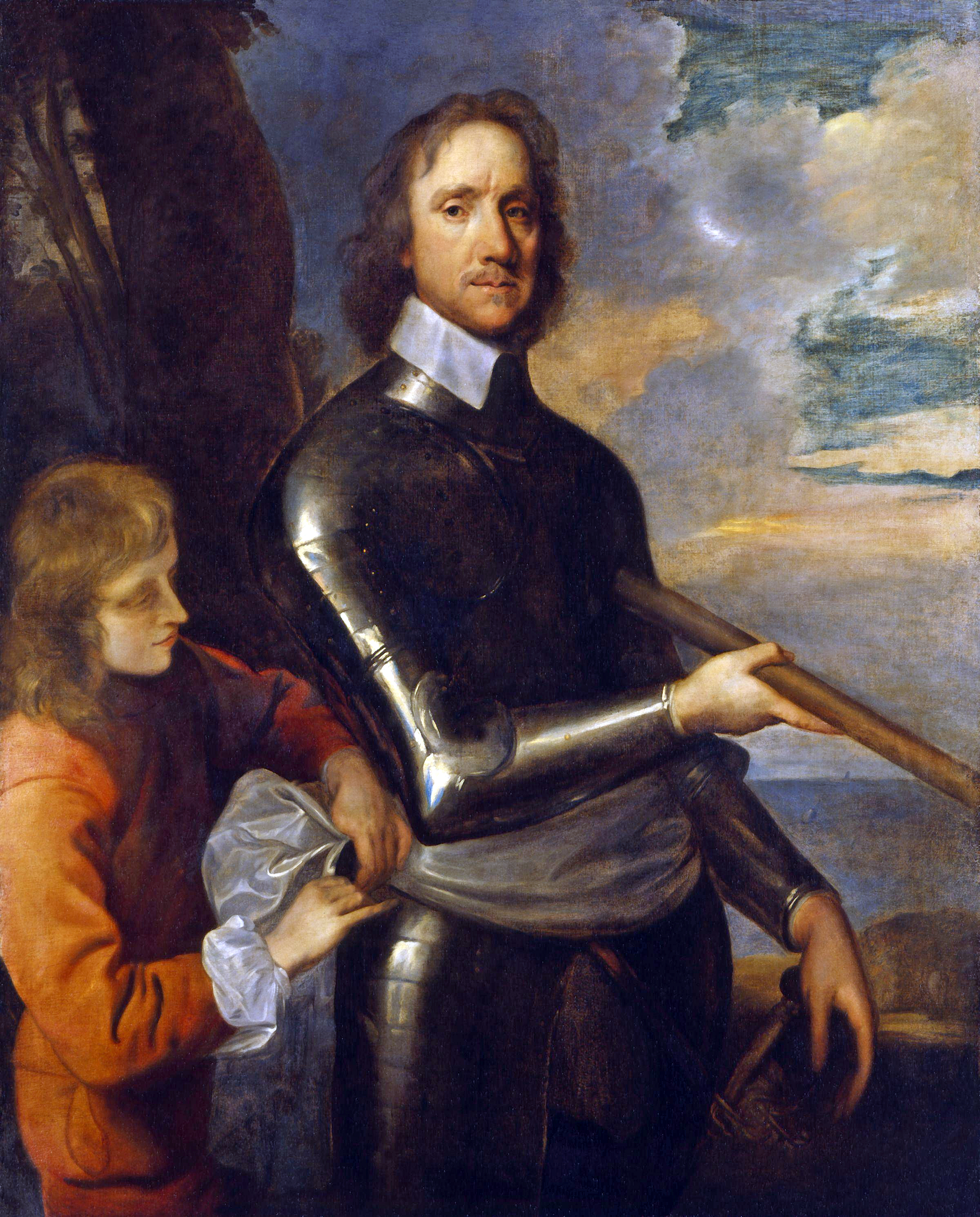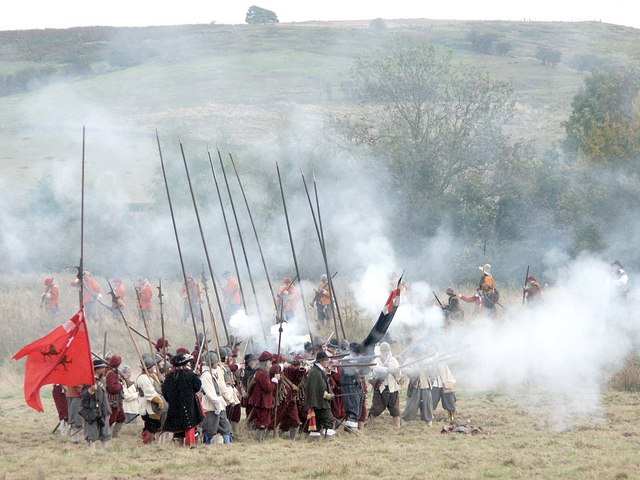|
Charles Fleetwood
Charles Fleetwood ( 1618 – 4 October 1692) was an English lawyer from Northamptonshire, who served with the Parliamentarian army during the Wars of the Three Kingdoms. A close associate of Oliver Cromwell, to whom he was related by marriage, Fleetwood held a number of senior political and administrative posts under the Commonwealth, including Lord Deputy of Ireland from 1652 to 1655. After Cromwell's death in September 1658, Fleetwood initially supported his son Richard Cromwell as Lord Protector, before forcing him from power in April 1659. Together with John Lambert, he dominated government for a little over a year before being outmaneuvered by George Monck. Following the Stuart Restoration, Fleetwood was excluded from the Act of Indemnity of 1660, but escaped prosecution since he had not been involved in the Execution of Charles I in January 1649. Instead, he was barred from public office, and lived quietly in Stoke Newington, where he died on 4 October 1692. Early ... [...More Info...] [...Related Items...] OR: [Wikipedia] [Google] [Baidu] |
Lord Deputy Of Ireland
The Lord Deputy was the representative of the monarch and head of the Irish executive (government), executive under English rule, during the Lordship of Ireland and then the Kingdom of Ireland. He deputised prior to 1523 for the Viceroy of Ireland. The plural form is ''Lords Deputy''. List of Lords Deputy Lordship of Ireland Kingdom of Ireland The title subsequently became Lord Lieutenant of Ireland, with the holder also known informally as the Viceroy. References Citations Bibliography * Further reading * Lordship of Ireland Heads of state of Ireland Early modern history of Ireland Long stubs with short prose {{Ireland-hist-stub ... [...More Info...] [...Related Items...] OR: [Wikipedia] [Google] [Baidu] |
Robert Walker (painter)
Robert Walker (1599–1658) was an English portrait painter, notable for his portraits of the "Lord Protector" Oliver Cromwell and other distinguished parliamentarians of the period. He was influenced by Van Dyck, and many of his paintings can now be found at the National Portrait Gallery, London. Life and work Walker was the chief painter of the parliamentary party during the Commonwealth of England from 1649 to 1658. Nothing is known of his early life. His manner of painting, though strongly influenced by that of Van Dyck, is yet distinctive enough to rule out the possibility of his being one of Van Dyck's immediate pupils. He is chiefly known for his portraits of Oliver Cromwell, and our knowledge of Cromwell's appearance is mainly based on Walker's paintings, as well as the portraits of him by Samuel Cooper and by Peter Lely. There are two main types. The earlier, representing Cromwell in armour with a page tying on his sash, and the later, full face to the waist in ar ... [...More Info...] [...Related Items...] OR: [Wikipedia] [Google] [Baidu] |
Banbury Castle
Banbury Castle was a medieval castle that stood near the centre of the town of Banbury, Oxfordshire. Historian John Kenyon notes that the castle is "remarkable for its early concentric shape".Kenyon, p. 68. History Banbury Castle was built in 1135 by Alexander, Bishop of Lincoln, in a motte and bailey design.Mackenzie, p. 150;Banbury: Buildings, ''A History of the County of Oxford: Volume 10: Banbury Hundred'', pp. 29–42, accessed 22 June 2011. The castle was later confiscated from Alexander by King Stephen in 1139, but was returned to the bishop later that year and mostly remained in the hands of later bishops until 1547. The castle was protected by a castle-guard drawn from estates around Banbury. The castle was strengthened between 1201–7 during the reign of King John. The castle was subsequently completely rebuilt; earlier historians had concluded that the rebuilding occurred in the late 13th century, but archaeological excavations in the 1970s demonstrated that the wor ... [...More Info...] [...Related Items...] OR: [Wikipedia] [Google] [Baidu] |
Commonwealth Of England
The Commonwealth of England was the political structure during the period from 1649 to 1660 when Kingdom of England, England and Wales, later along with Kingdom of Ireland, Ireland and Kingdom of Scotland, Scotland, were governed as a republic after the end of the Second English Civil War and the High Court of Justice for the trial of Charles I, trial and execution of Charles I. The republic's existence was declared through "An Act declaring England to be a Commonwealth", adopted by the Rump Parliament on 19 May 1649. Power in the early Commonwealth was vested primarily in the Parliament and a English Council of State, Council of State. During the period, fighting continued, particularly in Ireland and Scotland, between the parliamentary forces and those opposed to them, in the Cromwellian conquest of Ireland and the Anglo-Scottish war of 1650–1652. In 1653, after dissolution of the Rump Parliament, the Army Council (1647), Army Council adopted the Instrument of Gover ... [...More Info...] [...Related Items...] OR: [Wikipedia] [Google] [Baidu] |
Oliver Cromwell
Oliver Cromwell (25 April 15993 September 1658) was an English statesman, politician and soldier, widely regarded as one of the most important figures in British history. He came to prominence during the Wars of the Three Kingdoms, initially as a senior commander in the Parliamentarian army and latterly as a politician. A leading advocate of the execution of Charles I in January 1649, which led to the establishment of the Commonwealth of England, Cromwell ruled as Lord Protector from December 1653 until his death. Although elected Member of Parliament (MP) for Huntingdon in 1628, much of Cromwell's life prior to 1640 was marked by financial and personal failure. He briefly contemplated emigration to New England, but became a religious Independent in the 1630s and thereafter believed his successes were the result of divine providence. In 1640 he was returned as MP for Cambridge in the Short and Long Parliaments. He joined the Parliamentarian army when the First Engl ... [...More Info...] [...Related Items...] OR: [Wikipedia] [Google] [Baidu] |
Roundhead
Roundheads were the supporters of the Parliament of England during the English Civil War (1642–1651). Also known as Parliamentarians, they fought against King Charles I of England and his supporters, known as the Cavaliers or Royalists, who claimed rule by absolute monarchy and the principle of the divine right of kings. The goal of the Roundheads was to give to Parliament the supreme control over executive branch, executive administration of England. Beliefs Most Roundheads sought constitutional monarchy in place of the absolute monarchy sought by Charles; however, at the end of the English Civil War in 1649, public antipathy towards the king was high enough to allow republican leaders such as Oliver Cromwell to abolish the monarchy completely and establish the Commonwealth of England. The Roundhead commander-in-chief of the first Civil War, Thomas Fairfax, remained a supporter of constitutional monarchy, as did many other Roundhead leaders such as Edward Montagu, 2nd Earl ... [...More Info...] [...Related Items...] OR: [Wikipedia] [Google] [Baidu] |
England
England is a Countries of the United Kingdom, country that is part of the United Kingdom. It is located on the island of Great Britain, of which it covers about 62%, and List of islands of England, more than 100 smaller adjacent islands. It shares Anglo-Scottish border, a land border with Scotland to the north and England–Wales border, another land border with Wales to the west, and is otherwise surrounded by the North Sea to the east, the English Channel to the south, the Celtic Sea to the south-west, and the Irish Sea to the west. Continental Europe lies to the south-east, and Ireland to the west. At the 2021 United Kingdom census, 2021 census, the population was 56,490,048. London is both List of urban areas in the United Kingdom, the largest city and the Capital city, capital. The area now called England was first inhabited by modern humans during the Upper Paleolithic. It takes its name from the Angles (tribe), Angles, a Germanic peoples, Germanic tribe who settled du ... [...More Info...] [...Related Items...] OR: [Wikipedia] [Google] [Baidu] |
Battle Of Worcester
The Battle of Worcester took place on 3 September 1651 in and around the city of Worcester, England and was the last major battle of the 1642 to 1651 Wars of the Three Kingdoms. A Parliamentarian army of around 28,000 under Oliver Cromwell defeated a largely Scottish Royalist force of 16,000 led by Charles II of England and Scotland. The Royalists took up defensive positions in and around the city of Worcester. The area of the battle was bisected by the River Severn, with the River Teme forming an additional obstacle to the south-west of Worcester. Cromwell divided his army into two main sections, divided by the Severn, in order to attack from both the east and south-west. There was fierce fighting at river crossing points and two dangerous sorties by the Royalists against the eastern Parliamentary force were beaten back. Following the storming of a major redoubt to the east of the city, the Parliamentarians entered Worcester and organised Royalist resistance collapsed. Charl ... [...More Info...] [...Related Items...] OR: [Wikipedia] [Google] [Baidu] |
Battle Of Dunbar (1650)
The Battle of Dunbar was fought between the English New Model Army, under Oliver Cromwell, and a Scottish army commanded by David Leslie, 1st Lord Newark, David Leslie on 3 September 1650 near Dunbar, Scotland. The battle resulted in a decisive victory for the English. It was the first major battle of the Anglo-Scottish war (1650–1652), 1650 invasion of Scotland, which was triggered by Scotland's acceptance of Charles II of England, Charles II as king of Britain after the beheading of his father, Charles I of England, Charles I on 30 January 1649. After Charles I's execution, the English Rump Parliament established a republican Commonwealth of England, Commonwealth in England. When their Solemn League and Covenant, erstwhile ally, Scotland, recognised Charles II as king of all of Britain on 1 May 1650 and began recruiting an army to support him, the English dispatched the New Model Army, under the command of Cromwell. The army crossed into Scotland on 22 July, with a fo ... [...More Info...] [...Related Items...] OR: [Wikipedia] [Google] [Baidu] |
Siege Of Oxford
The siege of Oxford comprised the First English Civil War, English Civil War military campaigns waged to siege, besiege the Cavalier, Royalist controlled city of Oxford, involving three short engagements over twenty-five months, which ended with a Roundhead, Parliamentarian victory in June 1646. The first engagement was in May 1644, during which Charles I of England, King Charles I escaped, thus preventing a formal siege. The second, in May 1645, had barely started when Thomas Fairfax, 3rd Lord Fairfax of Cameron, Sir Thomas Fairfax was given orders to stop and pursue the King to Battle of Naseby, Naseby instead. The last siege began in May 1646 and was a formal siege of two months; but the war was obviously over and negotiation, rather than fighting, took precedence. Being careful not to inflict too much damage on the city, Fairfax even sent in food to the King's second son, James II of England, James, and was happy to conclude the siege with an honourable agreement before ... [...More Info...] [...Related Items...] OR: [Wikipedia] [Google] [Baidu] |
Siege Of Basing House
The siege of Basing House near Basingstoke in Hampshire, was a Parliamentarian victory late in the First English Civil War. Whereas the title of the event may suggest a single siege, there were in fact three major engagements. John Paulet, 5th Marquess of Winchester owned the House and as a committed Royalist garrisoned it in support of King Charles I, as it commanded the road from London to the west through Salisbury. The first engagement was in November 1643, when Sir William Waller at the head of an army of about 7,000 attempted to take Basing House by direct assault. After three failed attempts it became obvious to him that his troops lacked the necessary resolve, and with winter fast approaching Waller retreated back to a more friendly location. Early in 1644 the Parliamentarians attempted to arrange the secret surrender of Basing House with Lord Edward Paulet, the Marquess of Winchester's younger brother, but the plot was discovered. Parliamentary forces conti ... [...More Info...] [...Related Items...] OR: [Wikipedia] [Google] [Baidu] |
Siege Of Bristol (1645)
The second siege of Bristol of the First English Civil War lasted from 23 August 1645 until 10 September 1645, when the Royalist commander Prince Rupert surrendered the city that he had captured from the Parliamentarians on 26 July 1643. The commander of the Parliamentarian New Model Army forces besieging Bristol was Lord Fairfax. Context After the Battle of Naseby in June 1645, it was clear that the war had turned decisively in favour of the Parliamentarians. Indeed, by the end of July, Prince Rupert was actively petitioning the king to end the war by treaty. However, Charles believed he had enough men and munitions at his disposal to continue. The holding of Bristol was vital to these plans. In the first instance, it was one of the only ports remaining in Royalist hands. Secondly, Charles had ordered a recruitment drive in Wales, and intended Bristol to be used to receive the raised troops. Indeed he was even considering moving his headquarters from Oxford to Bristol ... [...More Info...] [...Related Items...] OR: [Wikipedia] [Google] [Baidu] |








